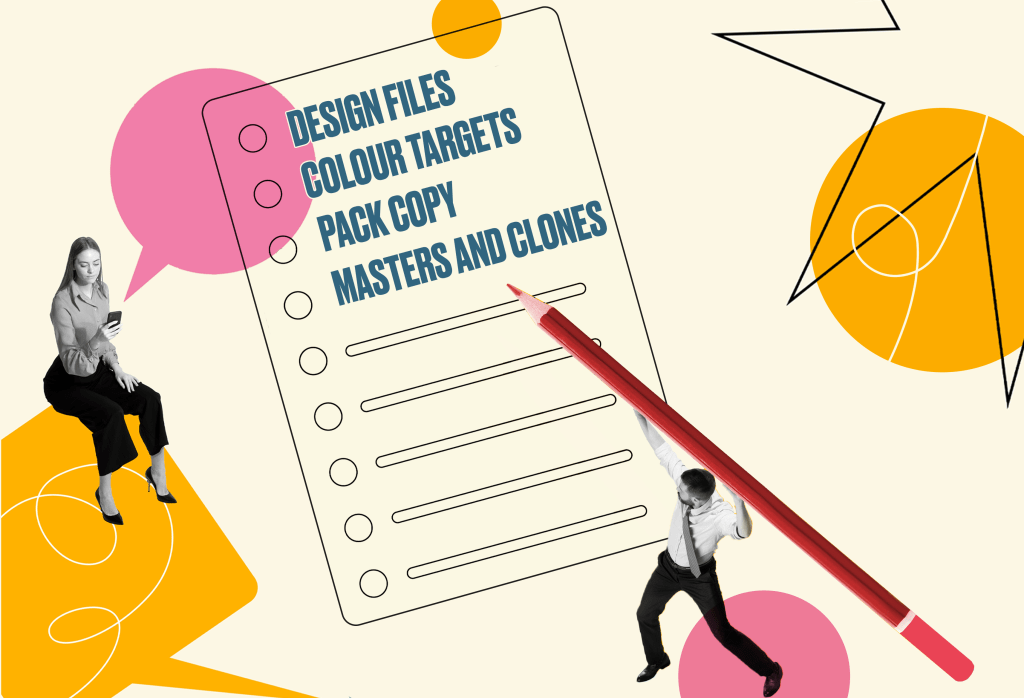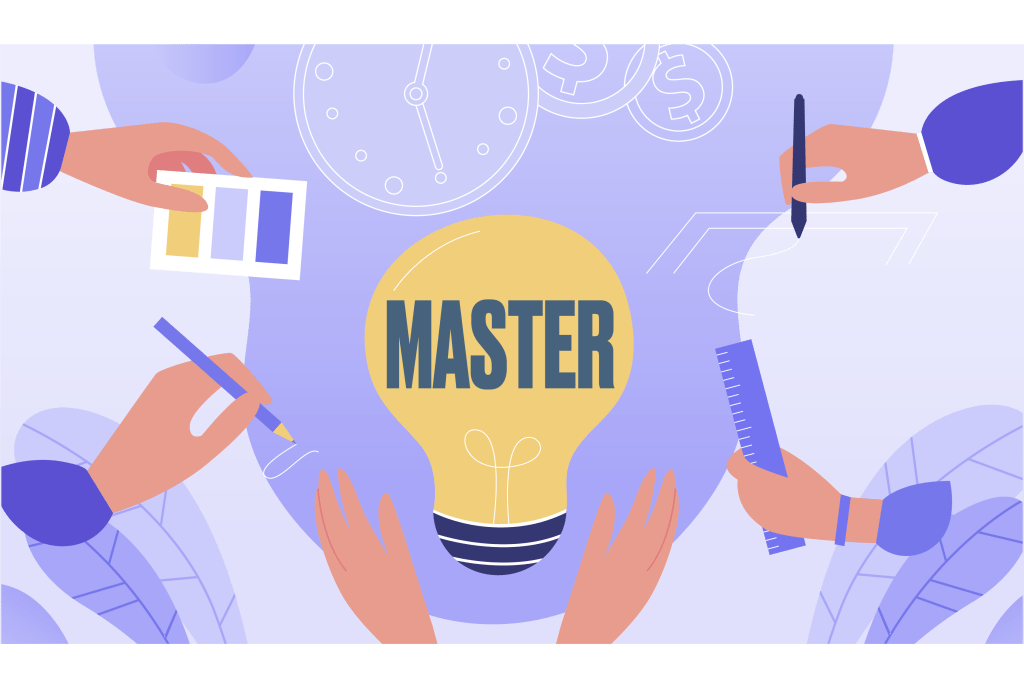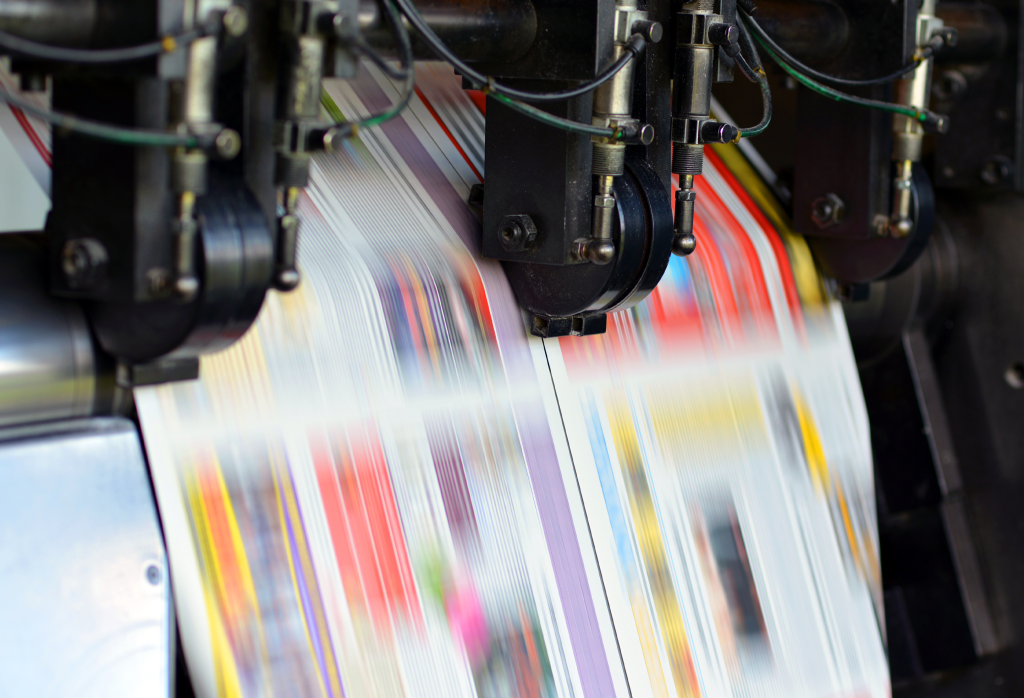HOW TO PREPARE FOR PRE-ARTWORK MEETINGS TO CREATE THE PERFECT PACKAGE

If you’re part of the brand team and you’ve got a new product launch on the
horizon, you’re probably thinking about that all-important product packaging –
and how to get there.
In our experience, a key ingredient for impactful product packaging is the
pre-artwork meeting.
Here’s how to get the most out of this meeting so you can launch your product
with packaging that’ll have it flying off the shelf.
WHAT’S A PRE-ARTWORK MEETING?
A pre-artwork meeting sets the scene for the upcoming product launch,
sharing more information about the new product and getting everyone aligned
on direction and end result.
Even if the product is still in development, it’s not too early to get a pre-artwork
meeting underway. Getting specialist input as early as possible gives you a
better idea on costs and technical feasibility, helping you make more informed
decisions and steer clear of any unwelcome surprises that might become a
black hole for the budget.
And in short, that’s exactly what a pre-artwork meeting is; a gathering of all the
key people that can weigh in with their specialist or technical expertise to nail
down how you get from here, to successful product launch.
WHO SHOULD BE INCLUDED IN A PRE-ARTWORK MEETING?
Here’s who you want on your guest-list for your meeting to make sure you have
all the right people present to get the most out of it.
- Brand and marketing leads
- Design agency supplier
- Artwork and repro agency supplier
- Printer (unless it’s a first-sight design meeting, in which case you won’t need the printer’s input until the design is locked down to go to artwork)

WHAT TO COVER IN YOUR PRE-ARTWORK MEETING
Design files
Your pre-artwork meeting is a great opportunity to validate your designs
before they progress any further or are signed off by wider stakeholders in the
business. Designs don’t always translate to real-world print and packaging the
way you might anticipate, and this can be one of those unwelcome surprises I
mentioned earlier.
Exploring the design files in your meeting helps make sure you’re putting your
creative energies into a design that will work really well when it comes to
putting the packaging into production and avoids having to technically alter
signed-off designs that you may need to take backwards in the process for
another round of internal approval.
Sure, sometimes you’ll need to make compromises where designs meet
technical functionality, but discussing the design files in your meeting highlights
early where those compromises might need to be made so that you can make
them without having to compromise on the original integrity of the design.
Nailing the brand colours
Colour targets
Use the pre-artwork meeting to get your visual standards set as early as possible.
What’s the creative intention of the product imagery, or what spot colour
references are being thought of?
These standards can be set by either using a calibrated proof for the images, and
numbered references from a Pantone book. If your creative agency doesn’t have
these available, make sure your artwork and repro supplier has the right tech to
ensure that what you see on screen is actually what you’ll get at print.
Substrates and their impact on colour
Packaging substrates come in all shapes and sizes, but they also have different
colours – and substrate is one of the biggest reasons for colours looking
inconsistent across a range.
It’s also often overlooked, so ensure that your creative and technical teams or
suppliers are giving airtime in this meeting to packaging substrates.
Each printer isn’t going to ask the other printer how their substrate is affecting
the colour of the ink. They’re only responsible for their press, substrate, and ink,
so discuss a plan to ensure how this is carefully managed and by whom. This is
something a great artwork and repro agency should be able to deliver.
Getting the pack copy right
Agree how you’ll be delivering the pack copy, so everyone involved in the
process is clear on what copy will be provided and when, ensuring the right copy
goes on the right package.
I’ve found gathering pack copy is a task that can be really time consuming for
brand and marketing teams – so our Pulse team has created the dream copy
brief that can be sent to each relevant department to gather all the right
information. When you’ve got to remember the claims, ingredients, nutrition,
allergens, recycling claims, distribution address, origin of produce and so much
more, it’s helpful to use our online brief as a checklist to make the packaging the
showstopper you’re looking for.

Planning out masters and clones
Use the technical know-how in the room to discuss if the masters and clone
theory works for your range, and if so, which designs will be a master.
Masters and clone theory is not only the most efficient way of working, it also
increases consistency and reduces amendment loops and cost. It’s a game changer
if your design is following a natural and strategic flow throughout the range.
How the masters and clones theory works
Start by looking at the smallest packs you have for masters, as these will be the
hardest layouts to fit the design and content on, but keep in mind that you don’t
just pick the smallest size for all masters. For example, choosing 1 small apple
flavour, 1 medium banana flavour and 1 large strawberry flavour as masters,
results in 3 masters covering 9 SKU variations in the range.
The real save arrives when all masters are fully approved for content and layout,
and you can start to roll this out for the remaining clones. Amendments should
be at a minimum because all the queries on the masters have been answered,
and timings dramatically improve while producing the majority of your artworks.
Number of SKUs
When you’re preparing for the meeting, having a list of all the SKUs (stock-keeping
units) available is a great starting point as it factors into some other decisions (like
the masters and clones as above). It’s also helpful for your list to include the pack
type, printer name, printer contact, substrate and finish (matt/gloss).
Packaging cutter layout
All packaging requires an approved cutter layout to make sure design and
artwork content fits in the right areas and can be seen as intended – so this
should definitely be on your meeting agenda.
There are technical elements to consider, such as BBE area, barcode position,
seal areas (print free or content free), eye mark position and colour for packing
requirements on flexible packaging, and orientation.
It’s important to note that the cutter must always be used at full size and not
scaled for creative purposes. Even if a cutter has measurements on, if it’s scaled
up or down it’s not guaranteed to fit the die cut that the printer or manufacturer
has made and could result with images or content being cut off the pack.

Sharing your printer information
Even at the early stages of the process it’s really helpful to know who the
printer will be. It may be too early to require the printer in your pre-artwork
meeting but do make sure to share your printer details with your supporting
agencies.
Not all supporting agencies do this, but at Pulse, we take an active role in liaising
with the printer directly on your behalf. We take away the worry, technical
headache and give you back the precious time you need to do the things you’re
an expert at. We gather print specifications with our technical questionnaire as
well as colour profile information of their printing presses so we can produce
colour accurate proofs and manage your expectations of print. If we have the
right information this is an area where you can sit back and relax.
Setting expectations
Even at the early stages of the process it’s really helpful to know who the
printer will be. It may be too early to require the printer in your pre-artwork
meeting but do make sure to share your printer details with your supporting
agencies.
It might seem a little daunting to run a pre-artwork meeting if you’re not
100% confident with the technicalities of packaging and print, and you’re
certainly not alone. My advice is to always work with a technical partner
that can support every stage of the journey – leading your pre-artwork
meeting, translating the technical jargon, and dialling it back to a working
solution.
I see building FMCG packaging as a lot like baking a cake. To get it right,
you have to be precise with your ingredients and timings, otherwise you’ll
end up with a soggy bottom – and nobody wants that.
To learn more about how Pulse can support you with incredible FMCG
packaging for your next product launch, you can contact us here